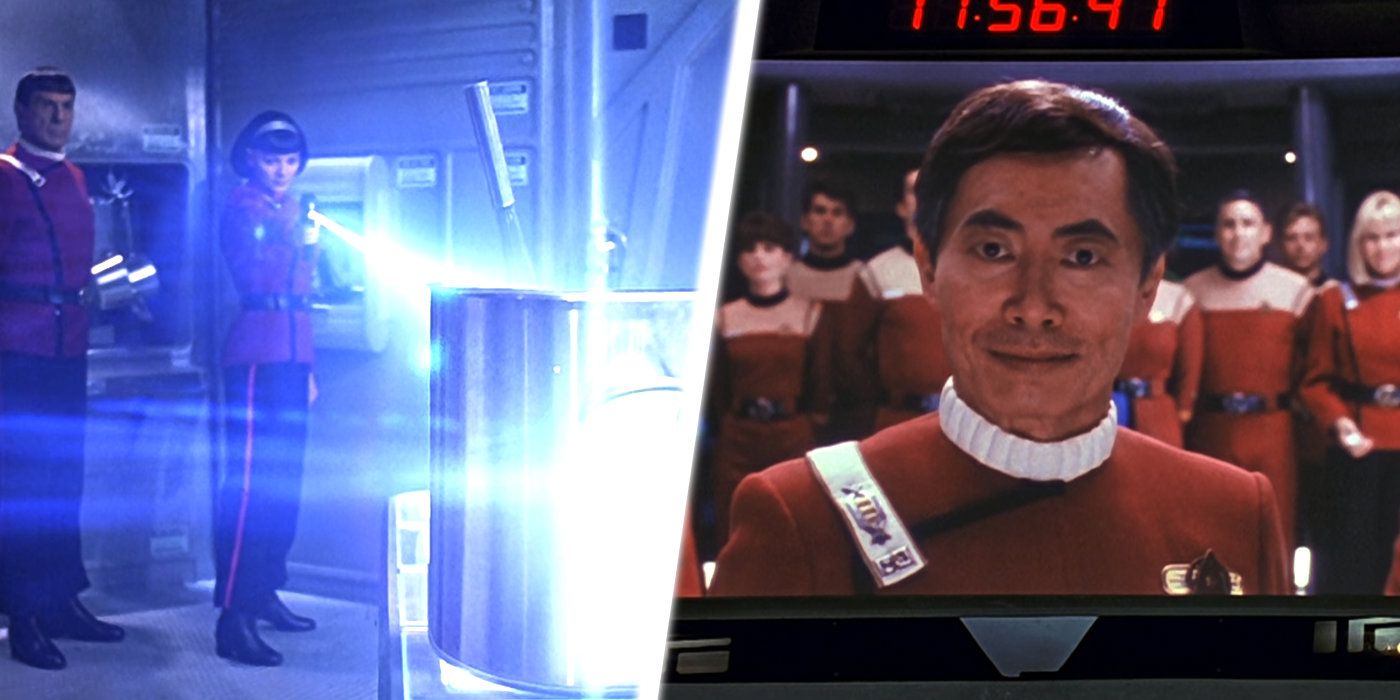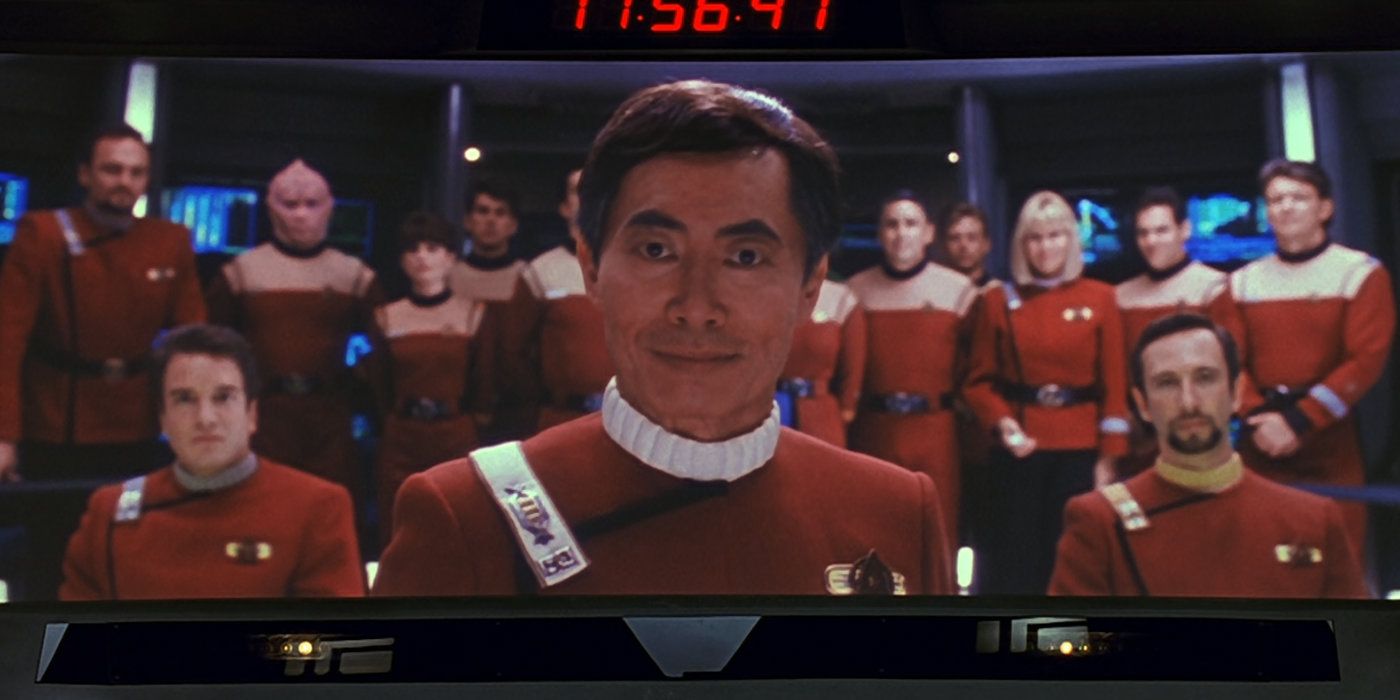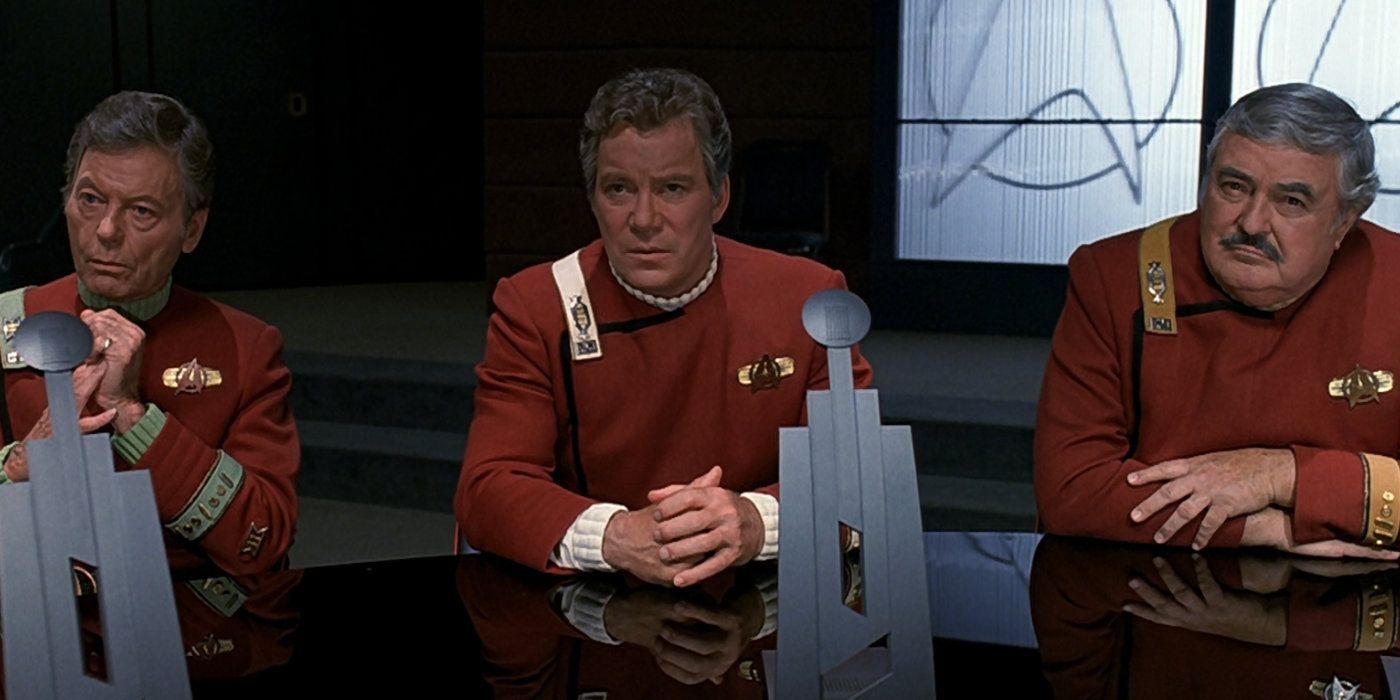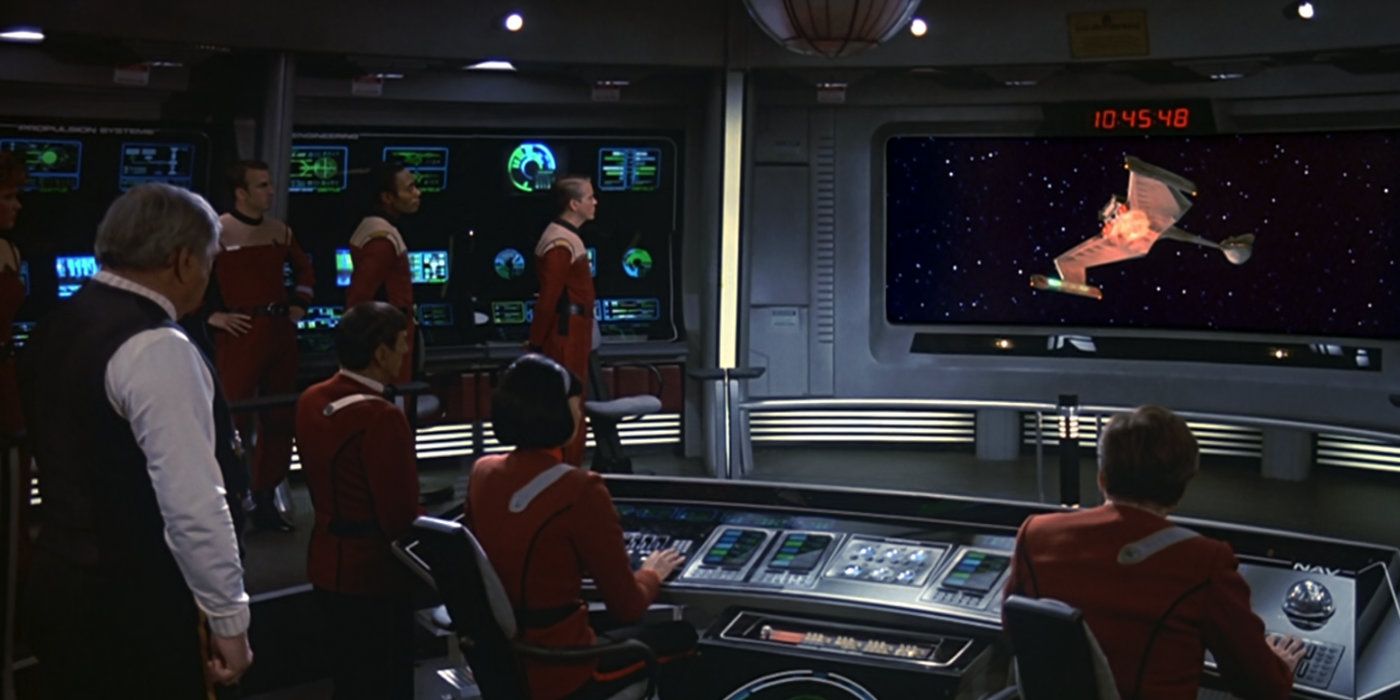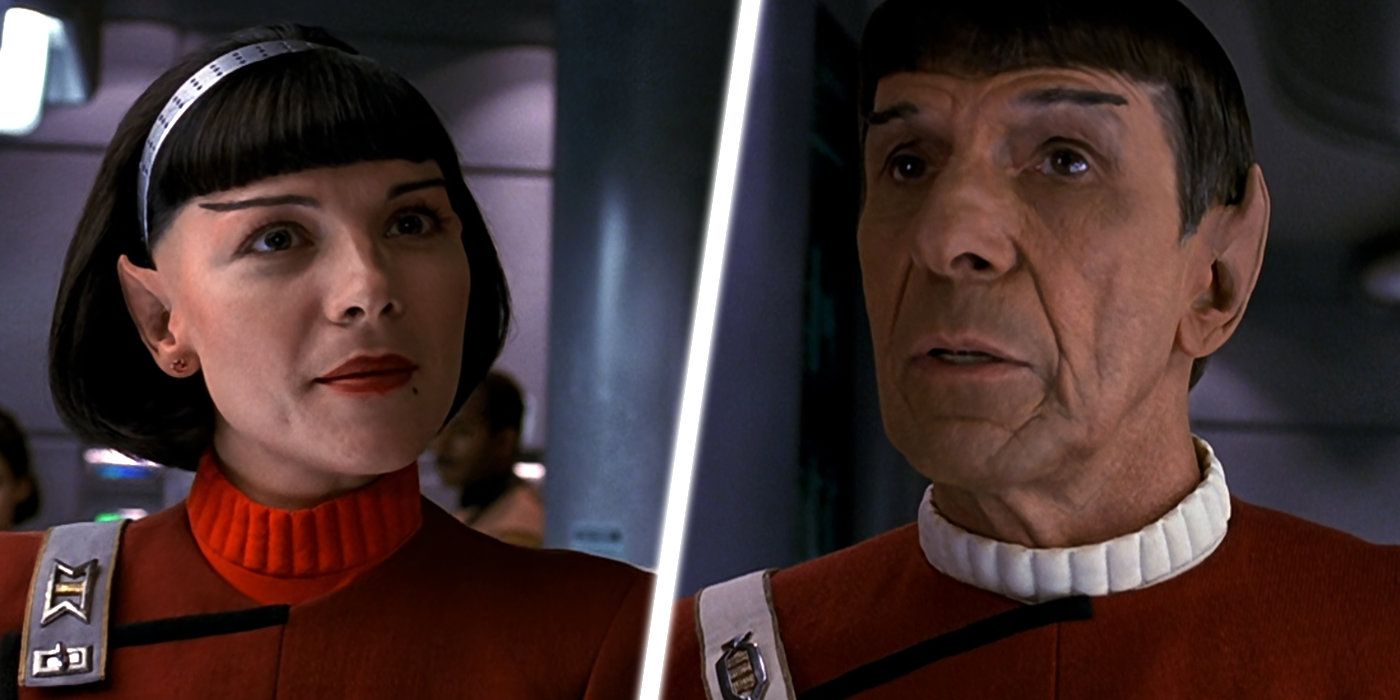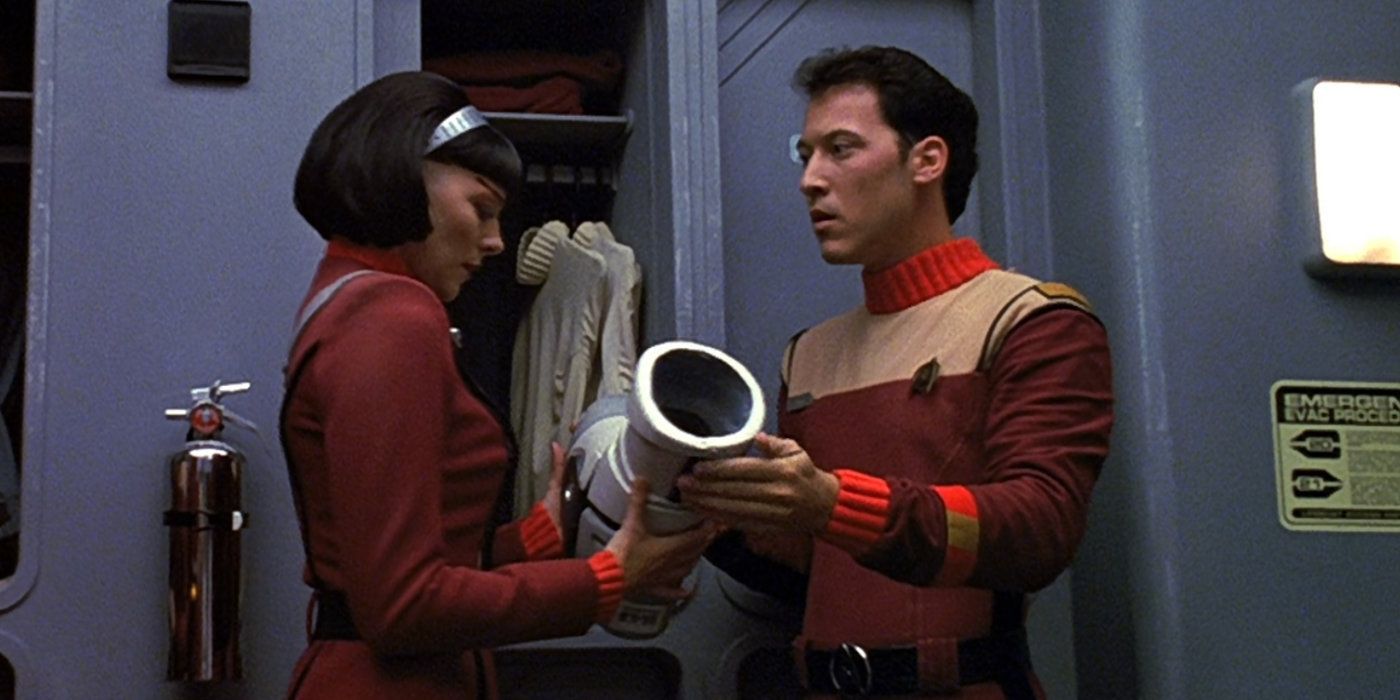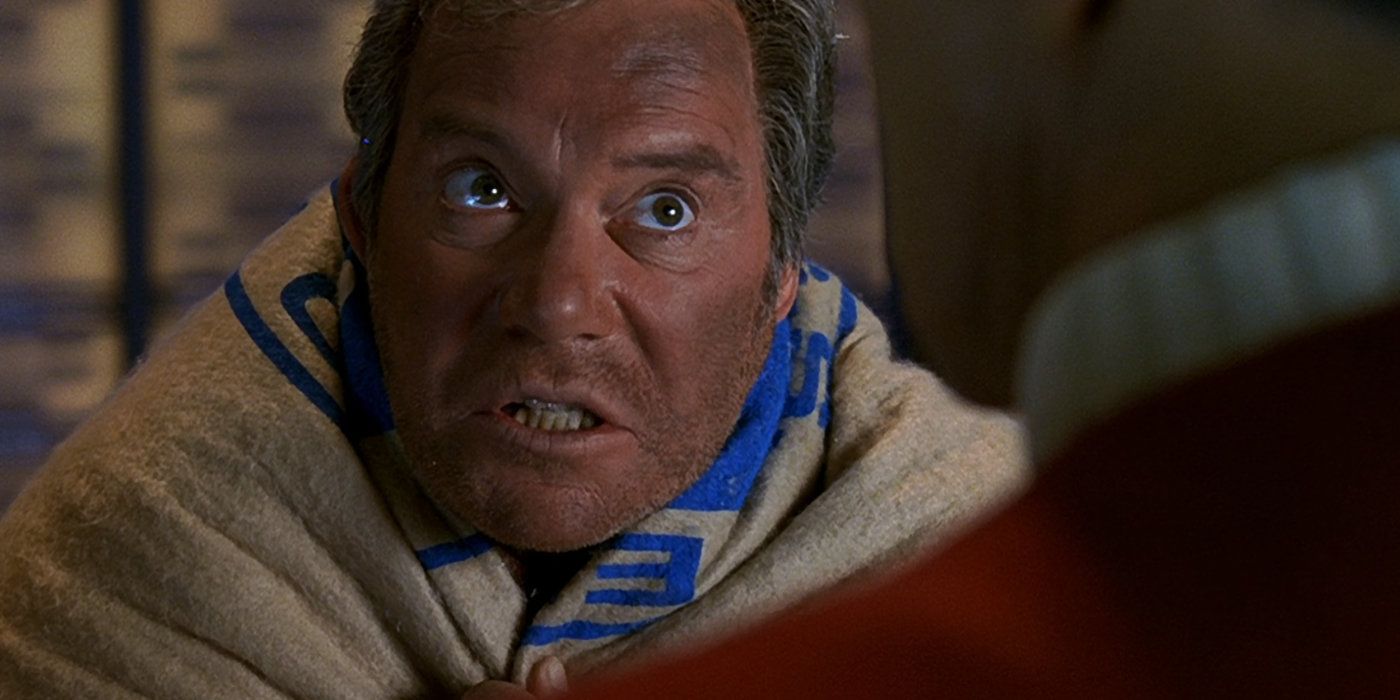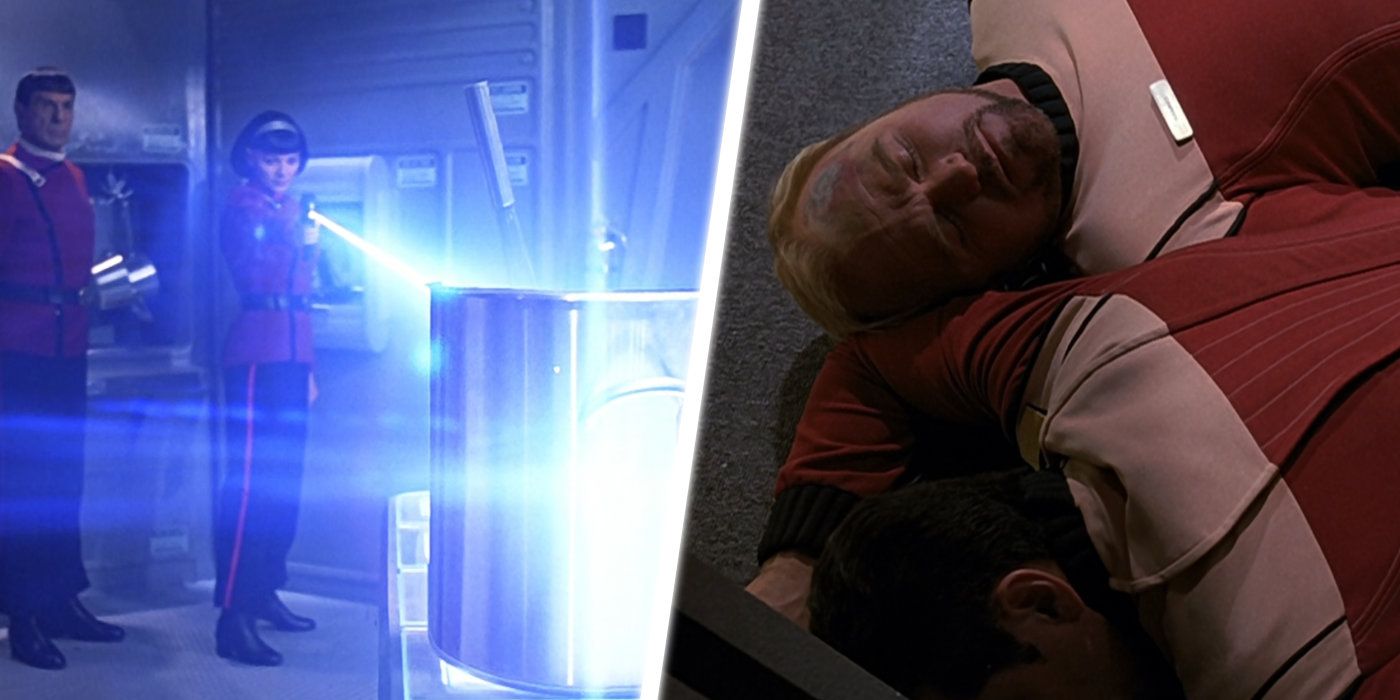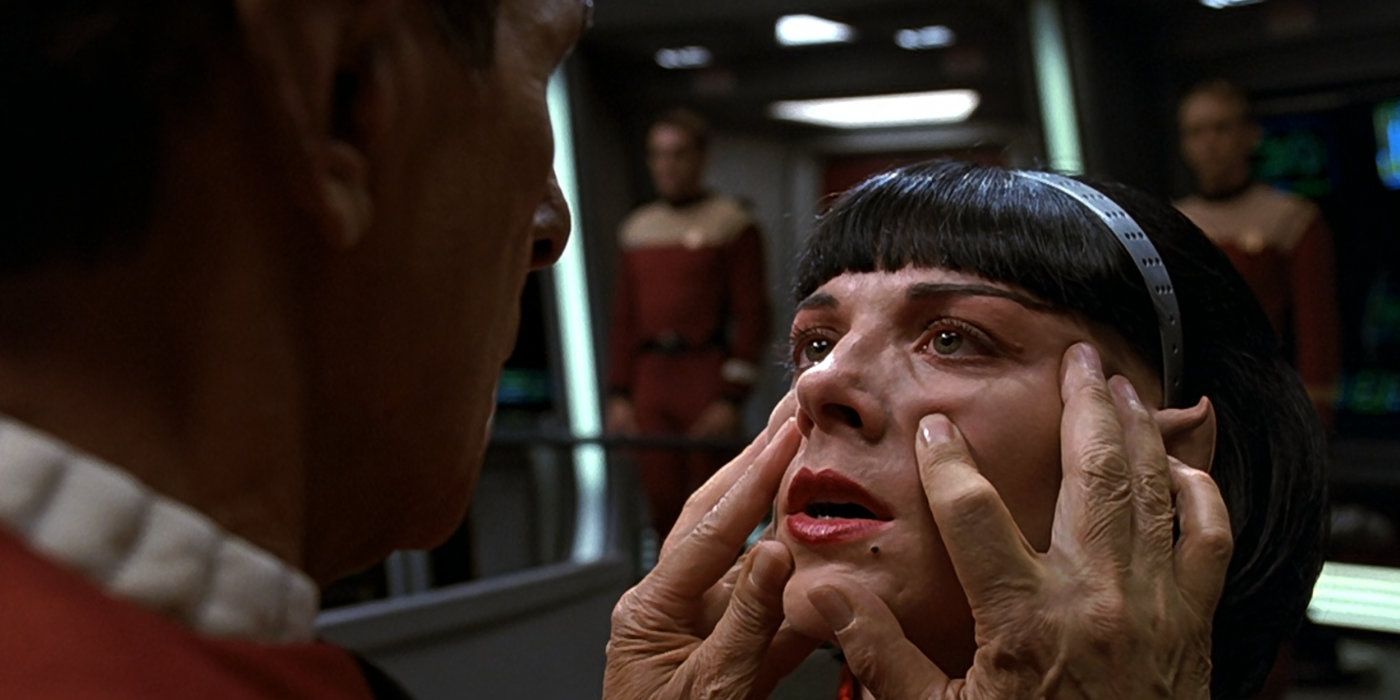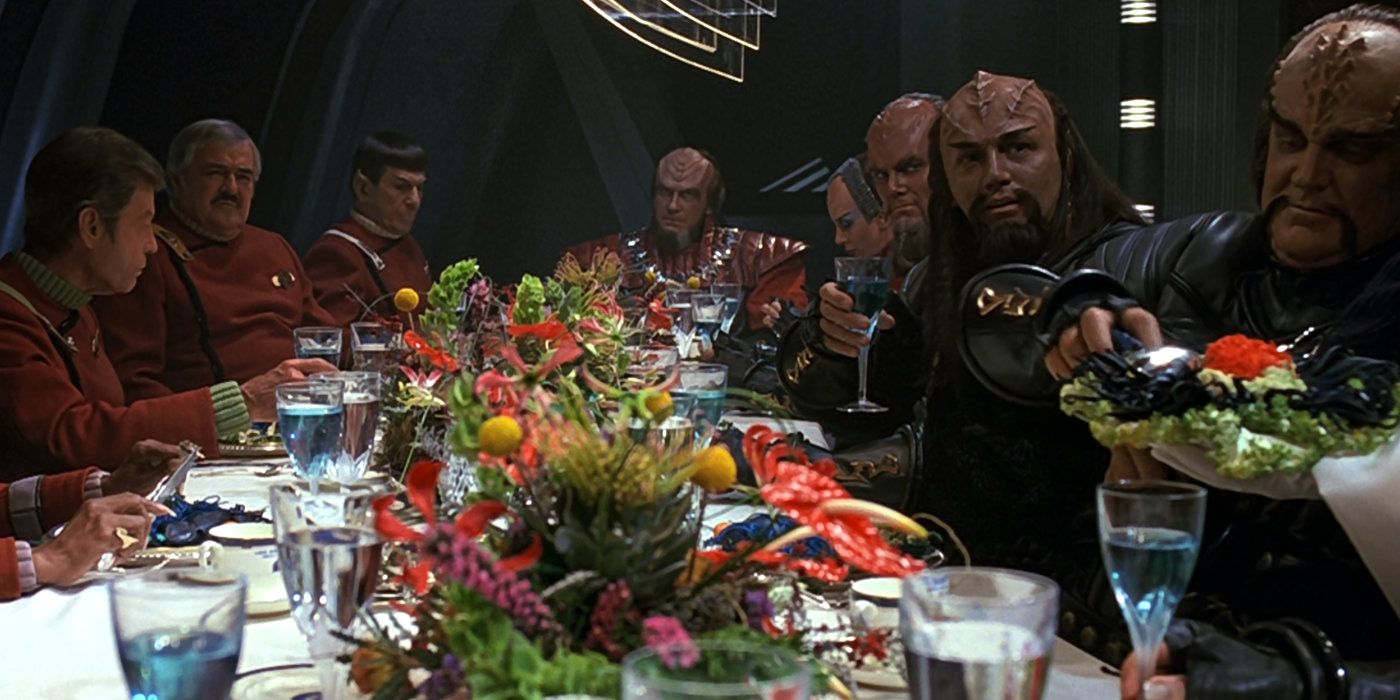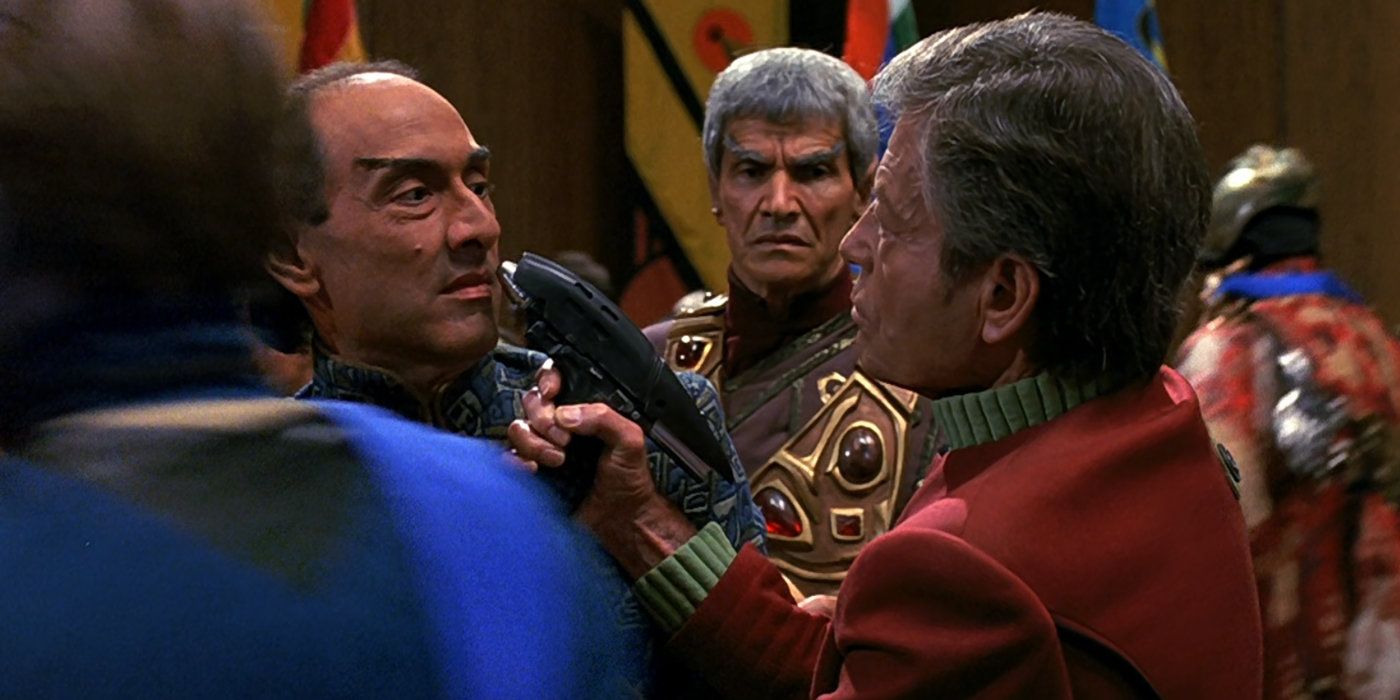Star Trek franchise films are usually looked at in an even/odd light. The even-numbered films tend to be the standout hits, while the odd numbers tend to be the weakest. There is some truth to that, despite the fact that every Trek film is pretty enjoyable to watch, for different reasons altogether. Star Trek VI was the final big-screen film to feature the original Enterprise crew under the command of Kirk, and it sent them off with a bang.
However, like any film, there are things that just don't make sense about the characters, the plot, and the devices writers use to move the story along. For all its worth, Star Trek VI is no different. Here are just a few things that do not make any sense about this otherwise excellent and enjoyable Star Trek film.
Captain Sulu
It was great to see Sulu finally break away from the helm controls and become a full-fledged Captain of the highly prestigious USS Excelsior. The question is... how? Little explanation is given for how he managed to make such a monumental leapfrog straight into the Captain's chair, even to this day.
While Sulu obviously made a great Captain, it simply makes no sense given the timeline. He hadn't shown nearly the same kind of ambition as the best Captains in Starfleet, which makes it especially odd for them to give him something as technologically advanced as the Excelsior as his first command vessel.
Why Was Kirk Sent As A Diplomat To The Klingons?
While the premise of Star Trek VI hedges its bets on Captain Kirk's hatred of the Klingons, that's not enough to go on. Yes, a conspiracy involving Starfleet officers and members of the Klingon Empire was afoot, but they were only a select few. The higher-ups at Starfleet were also involved in the decision, and this would have risked yet another interspecies blunder on their part.
From a chronological standpoint, this is downright silly. Captain Kirk makes no attempt to hide his dislike or distrust of the Klingons, but that's nothing compared to the Empire's dogged pursuit of him for what occurred on the Genesis planet. Sending Kirk to negotiate with the Klingons would have been like sending the family of a murder victim into court to pass judgment on the accused.
The Attack On The Klingon Ship
Careful planning was taken to make it look like the Enterprise-A fired on Chancellor Gorkon's ship, only to be boarded by Starfleet personnel who initiated a slaughter. Unfortunately, this makes absolutely no sense at all, in any way, shape or form. A prototype Klingon Bird of Prey was able to fire on the Enterprise whilst cloaked, and sitting underneath the Enterprise. Then, the logs were doctored to make it appear as if the Enterprise had fired instead.
From here, everything works backward in terms of logic. The two Federation assassins could have just as easily fired torpedoes from the actual Enterprise, thereby matching the logs with the actual torpedo stock, and eliminating any counter-evidence at the same time. It could be argued that personnel in the torpedo bay would have seen it happen, but anyone capable of messing with torpedo firing logs would have no doubt had access to that department.
Lying Vulcans
For all the talk of Vulcans never lying, Star Trek VI sure throws the notion out the window. In fact, it's such a prevalent plot device that Valeris and Spock point it out several times throughout the film, contradicting earlier testimony from the latter. Since Spock is half-human, his "creative thinking" could be forgiven in the face of an impending catastrophe.
Valeris however, is a homegrown Vulcan. Her propensity to lie throughout the film in order to protect her treasonous secret flies in the face of her own justifications. Ultimately, the two viewpoints would have come into some serious conflict.
The Missing Boots & Pressure Suits
Part of the fun of Star Trek VI involved a murder mystery, with the culprits still on board the Enterprise. After Kirk and McCoy were sentenced to hard labor on Rura Penthe, Spock and the crew immediately launched a full-scale investigation to comb every nook and cranny of the Enterprise in search of two pressure suits, and two pairs of boots.
These would serve as the evidence needed to prove that renegade officers were involved in the assassination plot against Chancellor Gorkon. Unfortunately, it makes little sense to hide either of these items on the Enterprise-A, when they could have just easily been beamed out into space. Remember, these same individuals fudged the initial transporter logs to hide their beam-over to the Chancellor's ship. What's one more?
The Viridium Patch
Spock was able to rescue both Kirk and McCoy from certain death on Rura Penthe by tracking them via a device known as a Viridium Patch. When activated, the patch could be tracked up to two full sectors away, which allowed the Enterprise to keep close tabs on both. Spock slapped the patch on Kirk before he beamed over to Gorkon's vessel, just in case anything went bad.
When they were taken into custody, tried, and sent to Rura Penthe, Spock utilized the patch to his advantage. The question is, why in the world wouldn't anyone have checked to see if Captain Kirk, of all people, was carrying a tracker? Rura Penthe was regarded as inescapable, which means every security precaution imaginable would have been taken into account, including screening for trackers.
Fussy Phasers
When the renegade officers used Federation pressure suits and magnetic grav boots to board the Klingon ship and assassinate Chancellor Gorkon, fans wondered why they bothered to hide them. After all, a phaser set to kill could easily vaporize them and destroy the evidence. The writers came up with the idea to show that a phaser set to maximum would trigger this new and improved Enterprise's onboard weapons detection alarms.
Later in the film, the two assassins are found dead with massive head trauma. The cause of death was determined to be a phaser set to stun, and fired at close range. This makes no sense, as threats posed by phasers set to stun could be used for all kinds of highly dangerous and nefarious purposes. Ideally, any form of weapons fire on board the ship should have set off the same alarm.
Valeris' Betrayal
Vulcans have been known to use their sense of logic in ways that lead them down dark paths, especially if they think it's part of the greater good. However, it makes little sense for Valeris to be the instrument of betrayal on board the Enterprise. Her pragmatism and analytical skills as a Vulcan would have inevitably led her to realize that continued hostilities with the Klingons would be illogical.
Yet, she ends up being the Judas Iscariot figure in this particular story. It's an interesting, and fairly unpredictable twist (at least on the first watch), but it simply doesn't fit well with the character's straight-arrow and squeaky clean record as a Vulcan Starfleet officer.
The Nefarious Plot
The entire premise of Star Trek VI involves a weakened Klingon Empire forced to reconsider its antagonistic relationship with the Federation. Unless it mends its ways, self-destruction would be inevitable. Unfortunately, there are those within the Klingon Empire and the Federation who don't want that to happen.
While the bitterness of decades of continued conflict would be extremely difficult to overcome, both sides would have recognized the necessity. The rebelling Klingons would have realized that sparking hostilities with the Federation would effectively cause the walls to close in around them, and crush them like a wounded insect.
The Collusion
It's hard to imagine several embittered enemies working together to continue throwing gasoline on their own fire, but that's exactly what happens throughout the film. While animosity on both sides threatens to derail peace talks between the two factions, it doesn't explain why both are eager to team up.
The final act reveals that both high-ranking Federation, Romulan and Klingon personnel were actively involved in a plot to keep this particular Cold War going. Realistically, all sides would have operated independently within a tribal mindset, rather than coordinating a means to continue hating each other.

